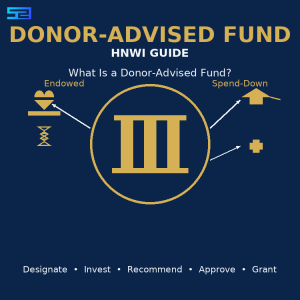Investment Terms To Know When Getting Into PE, and Alt Investments
The alternative investment industry—spanning hedge funds, private equity, venture capital, and digital assets—operates in a language of its own. Terms like uncorrelated alpha, Sharpe ratio, or 506(b) private placement may appear opaque to newcomers, but they are essential to navigating opportunities as an accredited investor or institutional allocator.
This guide was created to give you a complete glossary of hedge fund, private equity, and alternative investment terms in one place. Each definition blends plain-English clarity with industry precision, making the resource valuable for both experienced allocators and those just beginning to explore the world of alternatives.
What This Glossary Covers
We’ve organized the glossary into six categories that reflect the major pillars of alternative investments:
- Investment Strategies & Returns – How funds generate profits.
- Fund Structures & Vehicles – The frameworks and legal structures for raising capital.
- Risk & Performance Metrics – Tools for measuring returns, volatility, and downside risk.
- Investor Qualifications – Categories of investors and regulatory requirements.
- Quantitative & Technology Terms – Key concepts from the quant finance and algorithmic trading world.
- Alternative Assets – Investment categories beyond traditional stocks and bonds.
Each definition includes:
- Clear meaning
- Why it matters
- Examples in practice
- Links to related concepts
Investment Strategies & Returns
Uncorrelated Alpha
Uncorrelated alpha refers to investment returns that are not tied to the direction of broader markets. A hedge fund that profits from statistical arbitrage, even when equity markets are flat or declining, is generating uncorrelated alpha. Investors prize this because it provides diversification and resilience during downturns.
Absolute Return
Absolute return strategies aim to deliver positive performance regardless of whether markets rise or fall. For example, a global macro hedge fund may profit from interest rate shifts or currency moves, independent of stock market performance.
Relative Return
Relative return measures a fund’s performance against a benchmark, such as the S&P 500. A fund delivering +8% when the benchmark is +10% has underperformed on a relative basis, even though the absolute return is positive.
Beta Neutral
A beta-neutral strategy balances long and short positions to remove overall market exposure, isolating returns from stock selection skill rather than market direction.
Market Neutral
Market-neutral strategies, such as long/short equity, seek to profit from relative mispricings while minimizing exposure to broad market swings.
Arbitrage
Arbitrage involves exploiting price discrepancies across markets. A classic example is merger arbitrage, where a fund profits from the price spread between a target company and its acquiring firm.
Quantitative Strategy
Quant strategies use mathematical models, data analysis, and statistical methods to make investment decisions. Unlike discretionary managers, quants rely on systematic algorithms.
Algorithmic Trading
Algorithmic trading automates the execution of trades based on pre-programmed rules, often operating at speeds impossible for humans. It’s the backbone of high-frequency trading and many quant strategies.
Fund Structures & Vehicles
Private Placement
A private placement is the sale of securities to a select group of investors, often without the need for SEC registration. This method is common for hedge funds, private equity, and real estate funds.
506(b) Offering
Under Regulation D, a 506(b) private placement allows issuers to raise unlimited capital from accredited investors (and up to 35 non-accredited but sophisticated investors) without general advertising. It requires pre-existing relationships with investors.
506(c) Offering
A 506(c) offering permits general solicitation—funds can market to the public—but every investor must be verified as accredited. This rule modernized fundraising for hedge funds and PE firms.
Hedge Fund
A hedge fund is a pooled investment vehicle that employs flexible strategies—such as leverage, derivatives, or short selling—to generate returns. Hedge funds typically require investors to be accredited.
Private Equity Fund
Private equity funds invest directly in companies, often taking controlling stakes, with the goal of improving operations and later exiting at a profit.
Venture Capital Fund
VC funds focus on early-stage, high-growth companies. While risky, successful investments can generate outsized returns.
SPV (Special Purpose Vehicle)
An SPV is a legal entity created for a single investment, often used to pool investors into a specific deal.
Feeder Fund
A feeder fund collects money from investors and channels it into a master fund. This structure simplifies administration for managers and investors.
Master-Feeder Structure
A common hedge fund setup, where multiple feeder funds (domestic and offshore) invest in one master fund that executes all trades.
Risk & Performance Metrics
Sharpe Ratio
The Sharpe ratio measures excess return per unit of risk (volatility). A higher Sharpe indicates a better risk-adjusted return.
Sortino Ratio
Similar to Sharpe but focused only on downside volatility, making it a preferred measure for risk-averse investors.
Standard Deviation
A statistical measure of volatility, indicating how much returns deviate from the average.
Maximum Drawdown
The largest peak-to-trough decline in portfolio value, showing the worst-case loss an investor could have experienced.
Value at Risk (VaR)
VaR estimates the maximum potential loss of a portfolio within a set time frame at a given confidence level (e.g., “95% chance losses won’t exceed $5M in one day”).
Tail Risk
The risk of extreme, low-probability events (so-called “black swans”) causing outsized losses.
Skewness & Kurtosis
Statistical terms that describe the asymmetry (skewness) and fat-tailedness (kurtosis) of return distributions, both critical for evaluating hedge fund risk.
Investor Qualifications
Accredited Investor
An individual or entity meeting SEC criteria (income above $200K annually or net worth over $1M excluding primary residence). This status grants access to hedge funds, private placements, and other alternatives.
Qualified Purchaser
A higher wealth threshold than accredited investors (generally $5M+ in investments), allowing access to certain private funds.
Family Office
An entity that manages investments and wealth for a single wealthy family, often allocating capital to hedge funds and PE.
High-Net-Worth Individual (HNWI)
Individuals with investable assets above a certain threshold, often targeted by fund managers.
Institutional Investor
Large organizations like pension funds, endowments, and insurance companies that allocate significant capital across alternatives.
Liquidity Preference
The degree to which investors need access to cash. Alternatives often involve illiquidity in exchange for higher return potential.
Lock-Up Period
The minimum time investors must keep money in a fund before withdrawing. Hedge funds may impose 1–3 year lock-ups.
Redemption Rights
The ability of investors to withdraw capital from a fund, subject to terms and notice periods.
Quantitative & Technology Terms
Backtesting
Testing an investment strategy using historical data to evaluate how it would have performed in the past.
Monte Carlo Simulation
Running thousands of randomized simulations to predict a strategy’s range of outcomes under different conditions.
Statistical Arbitrage
A quant strategy exploiting mean-reversion and correlation patterns across securities.
Factor Models
Models that explain portfolio returns based on exposure to risk factors like value, momentum, or size.
Smart Beta
Investment products that use rules-based methodologies to capture factor exposures, combining elements of active and passive investing.
High-Frequency Trading (HFT)
Ultra-fast trading strategies that exploit millisecond-level price inefficiencies, often requiring advanced infrastructure.
Machine Learning in Finance
The use of AI algorithms to detect patterns, forecast prices, or optimize portfolio management in real-time.
Alternative Assets
Real Assets
Investments in physical assets such as real estate, farmland, and infrastructure.
Distressed Debt
Buying the debt of financially troubled companies at a discount, with the potential for recovery upside.
Structured Products
Financial instruments engineered from underlying assets, such as mortgage-backed securities.
Commodities
Investments in raw materials like oil, natural gas, gold, and agricultural products.
Digital Assets
Cryptocurrencies, tokenized securities, and blockchain-based assets that are reshaping capital markets.
Fund of Funds
A fund that invests in other funds, offering diversification across managers and strategies but often layering fees.
Why Definitions Matter in 2025
The alternative investment landscape is evolving rapidly. AI, machine learning, and tokenization are transforming how capital is raised, how portfolios are managed, and how investors evaluate risk. At the same time, regulatory structures like 506(c) offerings are reshaping how hedge funds and private equity reach investors.
By grounding these innovations in clear definitions, this glossary empowers investors to navigate opportunities with confidence. For accredited investors and family offices, understanding these terms is not just academic—it’s a strategic advantage in building resilient, forward-looking portfolios.
https://t.co/tkLg07uFLE looking to learn about #PE and alt investments? Learn the language.
— Stephen Twomey (@StephenTwomey) September 15, 2025




